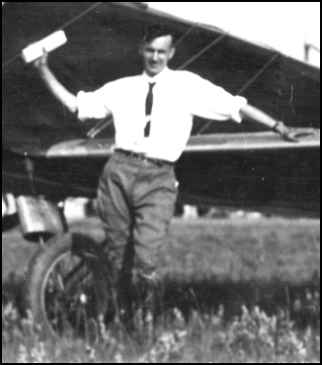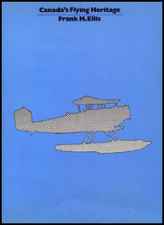
 |
William A. Straith Collection of Dean Straith, 8-31-08/ |
|
|
| This article on the Aerodacious website offers a comprehensive listing of all of the contracts which were let in the early days of the domestic airmail service. In addition to the history of the CAM-9 route, you will find many beautiful photographs of some of the planes which were involved. You can access the article by clicking on the title above. You may want to use the "FIND" function on "Straith" to locate the multiple entries on the page. |
| This page offers a quotation from the March 1, 1939 edition of Province (Page 24), which reports on a speech given by William A. Straith, chief flying instructor for Trans-Canada Airlines. You can access the article by clicking on the title above. You may want to use the "FIND" function on "Straith" to find the the entry on the page. |
 |
CANADA'S FLYING HERITAGE by Frank Ellis Product Details Paperback: 398 pages; 10.9 x 8 x 0.9 inches Publisher: University of Toronto Press; [2d ed.] edition (June 1, 1980) List Price: $21.29 Used Price: $4.37 ISBN-10: 0802064175 ISBN-13: 978-0802064172 |
|
Description: This book not only records the significant events of Canadian aviation but also pays tribute to the 'forgotten flyers who flew by guess and by God or with calculating caution - for the sheer love of flying - in the early days.' 'Pioneers of the Air' recounts the first tentative experiments with that overgrown monster, the flying machine - at this stage, the glider. Next come the Barnstormers, the first professional airmen, trying desperately to wrest a living from the air, pioneering in the field of practical flying as little more than vaudeville performers. These were the days of daring aero-acrobatics and tense and crowded air-meets. The First World War saw a tremendous advance in technical manoeuvres and in pilot skill; the first aviation school was established in Toronto, where the War Birds learned to fly. An unparallelled boom in aviation followed the war. Public interest had been aroused by the celebrated achievement of Canada's Air Force, and many young men, the restlessness of the war still in them, were obsessed by the itch to fly again. The Dollar-a-Minute days marked the beginning of passenger travel and a steady increase in experimental flying, to bear its practical fruit in days to come. The next chapter is one of heroic enterprise - the conquest of the Atlantic and the spanning of the Continent. No less epic is the history of the bush pilots who tamed the Canadian North. We must be grateful to Mr. Ellis for rescuing from obscurity this important chapter in our history. |


|